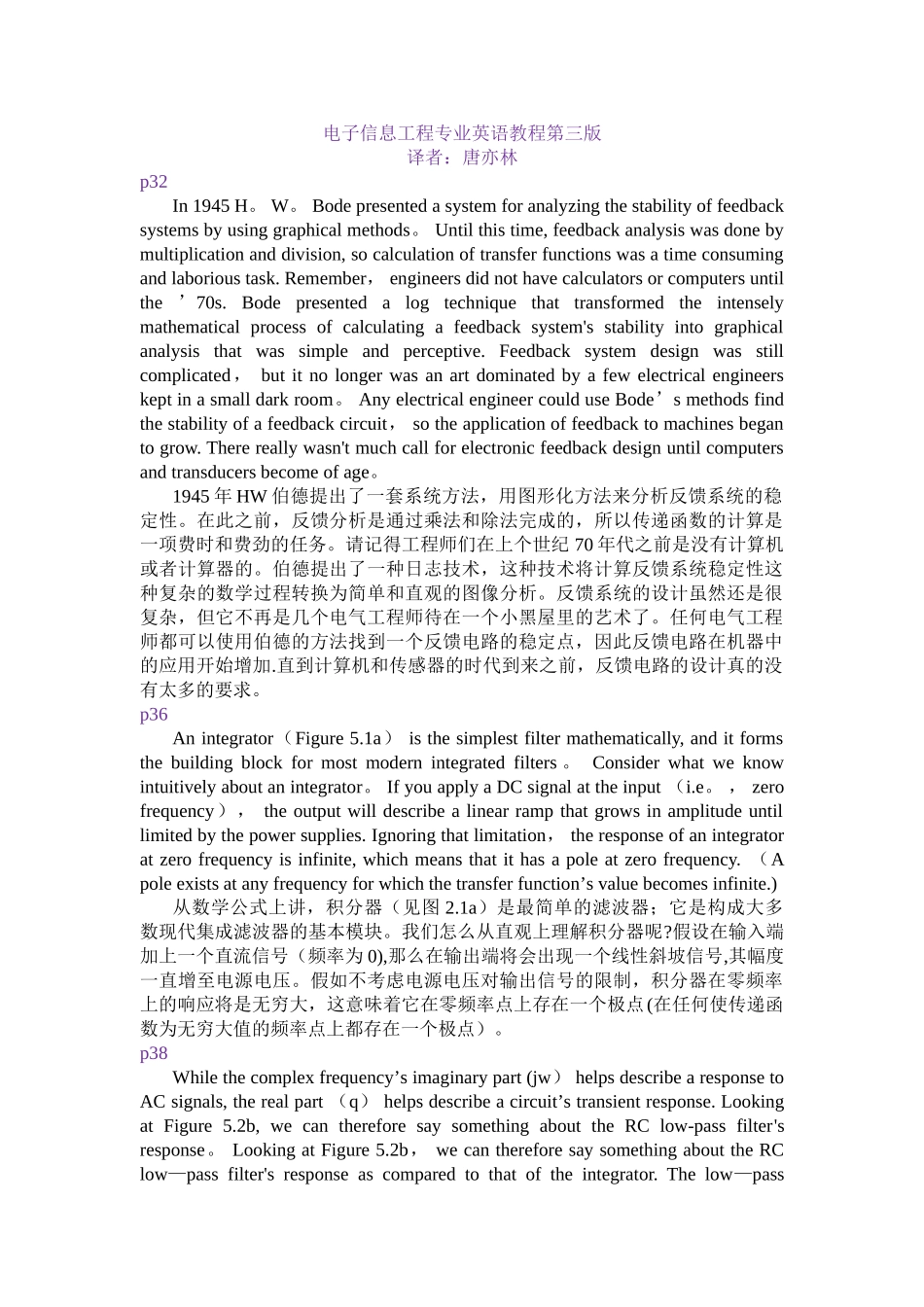电子信息工程专业英语教程第三版译者:唐亦林p32In 1945 H。 W。 Bode presented a system for analyzing the stability of feedback systems by using graphical methods。 Until this time, feedback analysis was done by multiplication and division, so calculation of transfer functions was a time consuming and laborious task. Remember, engineers did not have calculators or computers until the ’70s. Bode presented a log technique that transformed the intensely mathematical process of calculating a feedback system's stability into graphical analysis that was simple and perceptive. Feedback system design was still complicated, but it no longer was an art dominated by a few electrical engineers kept in a small dark room。 Any electrical engineer could use Bode’s methods find the stability of a feedback circuit, so the application of feedback to machines began to grow. There really wasn't much call for electronic feedback design until computers and transducers become of age。1945 年 HW 伯德提出了一套系统方法,用图形化方法来分析反馈系统的稳定性。在此之前,反馈分析是通过乘法和除法完成的,所以传递函数的计算是一项费时和费劲的任务。请记得工程师们在上个世纪 70 年代之前是没有计算机或者计算器的。伯德提出了一种日志技术,这种技术将计算反馈系统稳定性这种复杂的数学过程转换为简单和直观的图像分析。反馈系统的设计虽然还是很复杂,但它不再是几个电气工程师待在一个小黑屋里的艺术了。任何电气工程师都可以使用伯德的方法找到一个反馈电路的稳定点,因此反馈电路在机器中的应用开始增加.直到计算机和传感器的时代到来之前,反馈电路的设计真的没有太多的要求。p36An integrator(Figure 5.1a) is the simplest filter mathematically, and it forms the building block for most modern integrated filters 。 Consider what we know intuitively about an integrator。 If you apply a DC signal at the input (i.e。 , zero frequency), the out...


